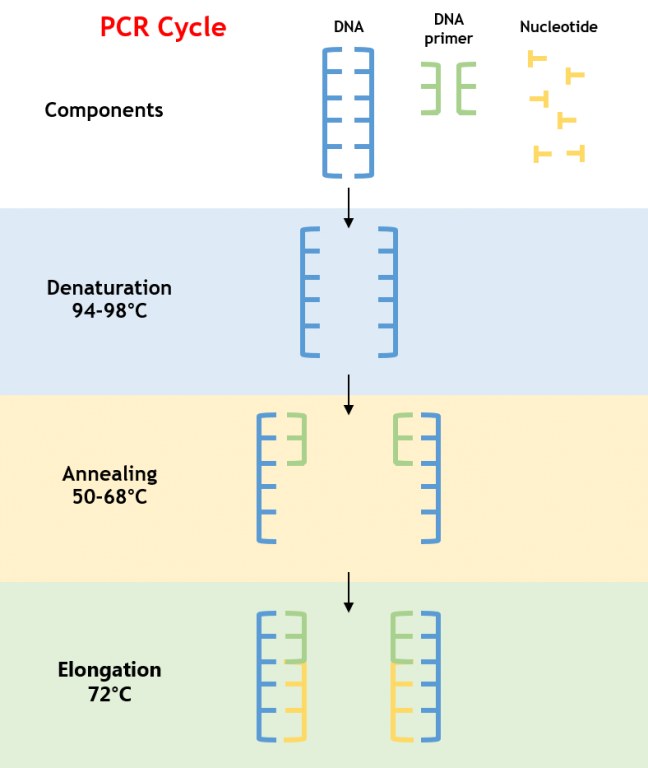Hi team members of Team Undefined,
I have written the assignment for 1:3 – definition of a term below. I hope everyone learns something new from this assignment and we can improve each other’s writing. Thank you for taking the time to review my assignment.
Regards,
Elton Kok
Introduction
This week’s assignment is to write a parenthetical, sentence, and an expanded definition of a relatively complex term that is used in my discipline. The objectives of this assignment is to understand the importance of definitions, and understand how the audience will change the level of detail required in the definition. Since my previous degree was in Biochemistry and Human Biology, I chose a term from this field as I am more comfortable with the terminology compared to the computer science discipline. I chose the term Quantitative Polymerase Chain Reaction (qPCR) which is an analytical technique which can be used to identify and quantify nucleic acids in a sample.
Term: Quantitative Polymerase Chain Reaction (qPCR)
Situation: A person of the general public wants to learn more from a brochure on how COVID-19 testing works
Parenthetical Definition: The laboratories use Quantitative Polymerase Chain Reaction (a test method that creates copies of the viral genes to detect it) to determine if you have COVID-19.
Sentence Definition: Quantitative Polymerase Chain Reaction (qPCR) is an analytical technique that is used to identify and quantify the amount of a target nucleic acid in a sample.
Expanded Definition:
Quantitative Polymerase Chain Reaction (qPCR) is an analytical technique that is used to identify and quantify the amount of a target nucleic acid in a sample. It works by creating multiple copies of the target sequence and binding a fluorescent dye/molecule to the copies which can then be detected and quantified by the strength of the emitted fluorescence.
The Polymerase Chain Reaction (PCR) technique was first developed by Kerry Mullis in the 1980s and was used to amplify the amount of DNA/genetic material in a sample. However, this technique has shortcomings as it can only be used to amplify the amount of genetic material in a sample. Thus, further testing and analysis is required after PCR to achieve a qualitative or quantitative result. In the 1990s, the Quantitative Polymerase Chain Reaction (qPCR) technique was developed which combined the amplification and analysis step by the introduction of fluorescent molecules. Presently, qPCR is widely used for both qualitative and quantitative testing of a genetic sample.
The qPCR technique takes genetic material from the swab sample and mixes it with a combination of polymerases, primers, nucleotides, and fluorescent dyes. These are the building blocks that will be used to create many copies of the genetic material provided by the sample. The primers bind to the genetic material to act as a starting point for the polymerase. The polymerase then reads the genetic material and adds the complementary nucleotide to the new sequence that it is currently building. The fluorescent dyes will bind to the newly created genetic material and will emit light of a certain wavelength by the fluorescent molecule.
Mixing these building blocks and the target sequence however, will not just magically start producing copies of the genetic material. For primers to bind the genetic material must separate from its complementary strand, which happens at around 95 degrees Celsius. The temperature is then lowered to around 55 degrees Celsius for the primers to bind. Then the temperature is again increased to around 72 degrees Celsius which is the optimal temperature for the polymerase to add nucleotides to the new strand. This cycling of temperatures is repeated for around 30-40 times to get a detectable result as shown below in figure 1. Note, thermal cycling is shared between both PCR and qPCR.

https://www.clinisciences.com/upload/pcr-kez6xvaw-a62hUrhr.jpg
Figure 1. The thermal cycling process of PCR to create multiple copies of the target sequence.
Reference List
Kralik, Petr, and Matteo Ricchi. “A Basic Guide to Real Time PCR in Microbial Diagnostics: Definitions, Parameters, and Everything.” Frontiers in Microbiology, vol. 8, 2017, doi:10.3389/fmicb.2017.00108.
Pfaffl, Michael W. “The Evolution of QPCR.” The Evolution of QPCR – Edited by MW Pfaffl, evolution.gene-quantification.info/.
“What Is Real-Time PCR (QPCR)?” Bio, www.bio-rad.com/en-ca/applications-technologies/what-real-time-pcr-qpcr?ID=LUSO4W8UU.
Leave a Reply